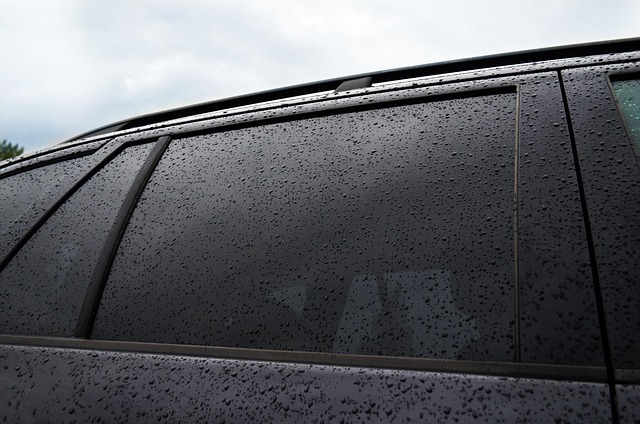Navigating the intricacies of Window tinting in Woodbridge VA regulations can be a daunting task, especially for Virginia residents aiming to balance aesthetic preferences with legal compliance. In Woodbridge, VA, understanding the state’s updated window tinting laws as of 2025 is crucial to avoid potential penalties and ensure road safety.
Why Are Window Tinting Laws Important?
Window tinting offers numerous benefits: enhanced privacy, reduced glare, and protection from harmful UV rays. However, excessively dark tints can impede visibility, posing risks to both drivers and law enforcement officers during traffic stops. Virginia’s tinting laws aim to strike a balance between these benefits and safety concerns, ensuring that vehicles maintain adequate visibility while reaping the advantages of tinted windows.
Without proper adherence to the law, drivers risk hefty fines, failed inspections, and potential safety hazards. Moreover, improper tinting can hinder night-time driving, increasing the chances of accidents. Law enforcement officers also face added risks when approaching vehicles with illegal tint levels, as reduced visibility can lead to uncertainty about a driver’s actions.
What Are Virginia’s Window Tinting Regulations?
Virginia’s window tinting laws, initially enacted in 1999, have undergone updates to address evolving safety standards and technological advancements. As of 2025, the regulations specify permissible levels of Visible Light Transmission (VLT) and reflectivity for different vehicle types:
For Sedans:
- Windshield: Non-reflective tint is allowed above the manufacturer’s AS-1 line (or the top 5 inches).
- Front Side Windows: Must allow more than 50% of light in.
- Back Side Windows: Must allow more than 35% of light in.
- Rear Window: Must allow more than 35% of light in.
For SUVs and Vans:
- Windshield: Non-reflective tint is allowed above the manufacturer’s AS-1 line.
- Front Side Windows: Must allow more than 50% of light in.
- Back Side Windows: Any darkness can be used.
- Rear Window: Any darkness can be used.
Additionally, the law permits a certain level of reflectivity to reduce glare and heat:
Reflectivity for All Vehicles:
- Front Side Windows: Must not be more than 20% reflective.
- Back Side Windows: Must not be more than 20% reflective.
For drivers looking to get their windows tinted, understanding these distinctions is essential. Choosing the wrong level of tint can not only lead to violations but may also impact vehicle insurance claims in case of accidents.
How to Ensure Compliance and Address Common Pain Points
Understanding the regulations is just the first step; implementing them correctly is where many vehicle owners face challenges. Common pain points include:
- Misinterpretation of Tint Darkness: Misunderstanding VLT percentages can lead to non-compliant tint installations.
- Unawareness of Reflectivity Limits: Some drivers overlook reflectivity restrictions, resulting in illegal modifications.
- Medical Exemptions Confusion: Those requiring medical exemptions might be unaware of the proper procedures to obtain them.
- Inconsistent Enforcement: While laws are clear, some law enforcement officers may interpret them differently, leading to mixed enforcement.
Solutions to Avoid Legal Trouble
- Consult Professional Installers: Engage with reputable window tinting professionals in Woodbridge, VA, who are well-versed in state laws and can recommend compliant tint levels.
- Verify Tint Certifications: Ensure that the tint film used meets Virginia’s standards. While film manufacturers aren’t required to certify their products in Virginia, using certified films can provide added assurance.
- Understand Medical Exemptions: Virginia allows medical exemptions for special tint. Windshields can have 35% VLT on the top 5 inches (AS-1 line) or 70% VLT across the entire windshield. Front-side windows may have up to 35% VLT. To apply for an exemption, consult with the Virginia Department of Motor Vehicles (DMV) and provide the necessary medical documentation.
- Stay Updated on Local Interpretations: Laws can be interpreted differently across counties. Regularly consult local DMV offices or law enforcement agencies in Woodbridge to ensure compliance with regional interpretations of state laws.
Additional Considerations
Beyond tint darkness and reflectivity, Virginia’s regulations encompass other aspects:
- Side Mirrors: Dual side mirrors are required if any window is tinted.
- Restricted Colors: Red, yellow, and amber tints are prohibited.
- Tint Variance: A 7% variance in tint is allowed, acknowledging potential discrepancies in tint measurements.
- Stickers: While the law mentions that stickers are required, the specifics are unspecified. It’s advisable to display any certification stickers as recommended by your tint installer.
- Penalties: Non-compliance can result in a Class 3 misdemeanor for the first offense and a Class 2 misdemeanor for subsequent offences. Fines vary based on the severity of the infraction, and repeat offenses could lead to harsher penalties, including the required removal of illegal tint.
Vehicle owners should also be aware that police officers can stop and ticket drivers solely based on suspected illegal tinting. Unlike some other vehicle infractions, tint violations are highly visible, making it easier for law enforcement to identify non-compliance.
Conclusion
Complying with Virginia’s window tinting laws is crucial for safety and legal adherence. By staying updated on the latest regulations and seeking guidance from experts in Woodbridge, VA, drivers can enjoy the advantages of window tinting without penalties. Regularly checking for law updates helps maintain compliance and road safety. Following Virginia’s 2025 window tinting laws ensures legal protection, better visibility, and enhanced safety. Whether tinting for aesthetics, comfort, or UV protection, adhering to regulations prevents fines and keeps vehicles looking and performing at their best.




